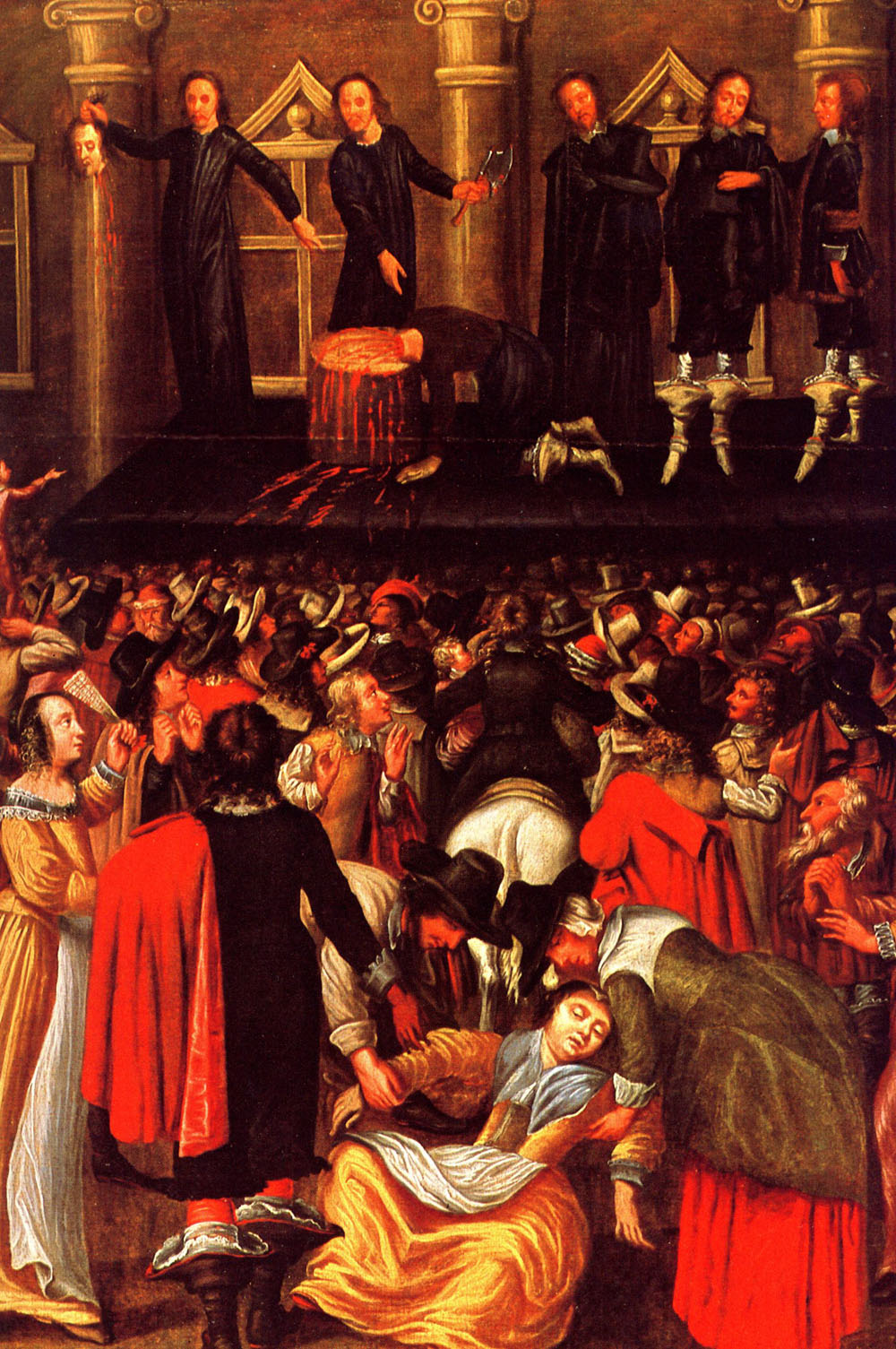Abolition of the Monarchy
| < Charles I and the National Covenant | Δ Index | Oliver Cromwell > |
The Scottish Covenanters joined forces with the English parliament in 1643, both subscribing a Solemn League and Covenant, and helped inflict a series of major defeats on the royalist armies, beginning with Marston Moor in July 1644.
Charles I surrendered to the Scots in 1646 and sued for peace. Yet victory – and the problem of what to do with the captive King – pushed the allies further and further apart.
In February 1647 the Scots went home leaving the King to his fate.
Disagreements broke out in both England and Scotland within the once united front of Covenanters and between moderate and radical factions of the English parliament. What the divisions revealed was the different attitudes of the former allies to Charles and to the monarchy itself.
The Scots staged a rescue mission and were heavily defeated at Preston in 1648.
But worse was to come. In January 1649, the radicals in the English Parliament led by Oliver Cromwell staged their ultimate coup by putting the King on trial and executing him.
 The execution of King Charles I January 1649
The execution of King Charles I January 1649
Within a few days the Scots proclaimed his son Charles (II) to be their monarch.
The English responded by abolishing the monarchy and declaring the nation a Commonwealth under Cromwell.
| < Charles I and the National Covenant | Δ Index | Oliver Cromwell > |